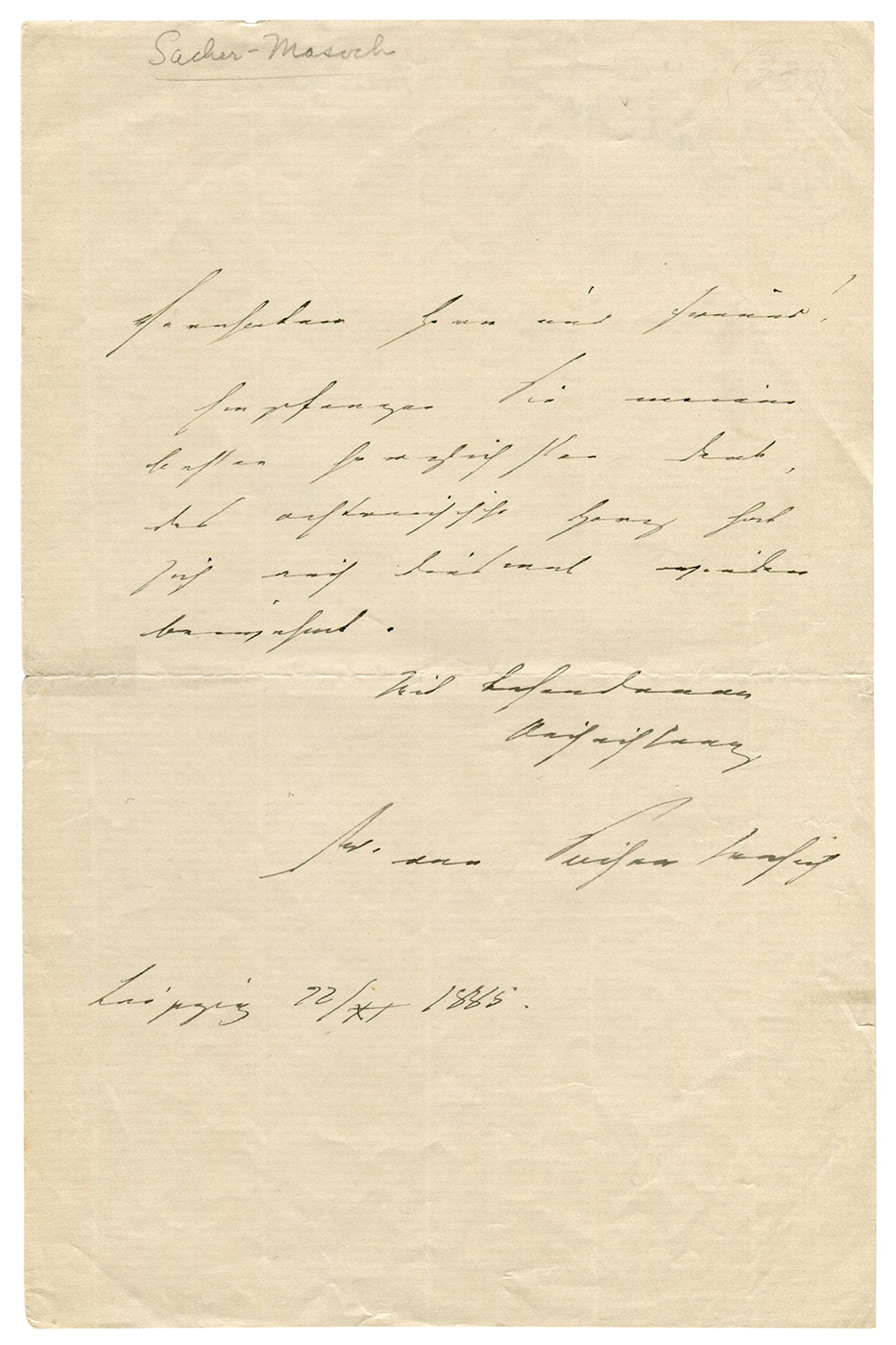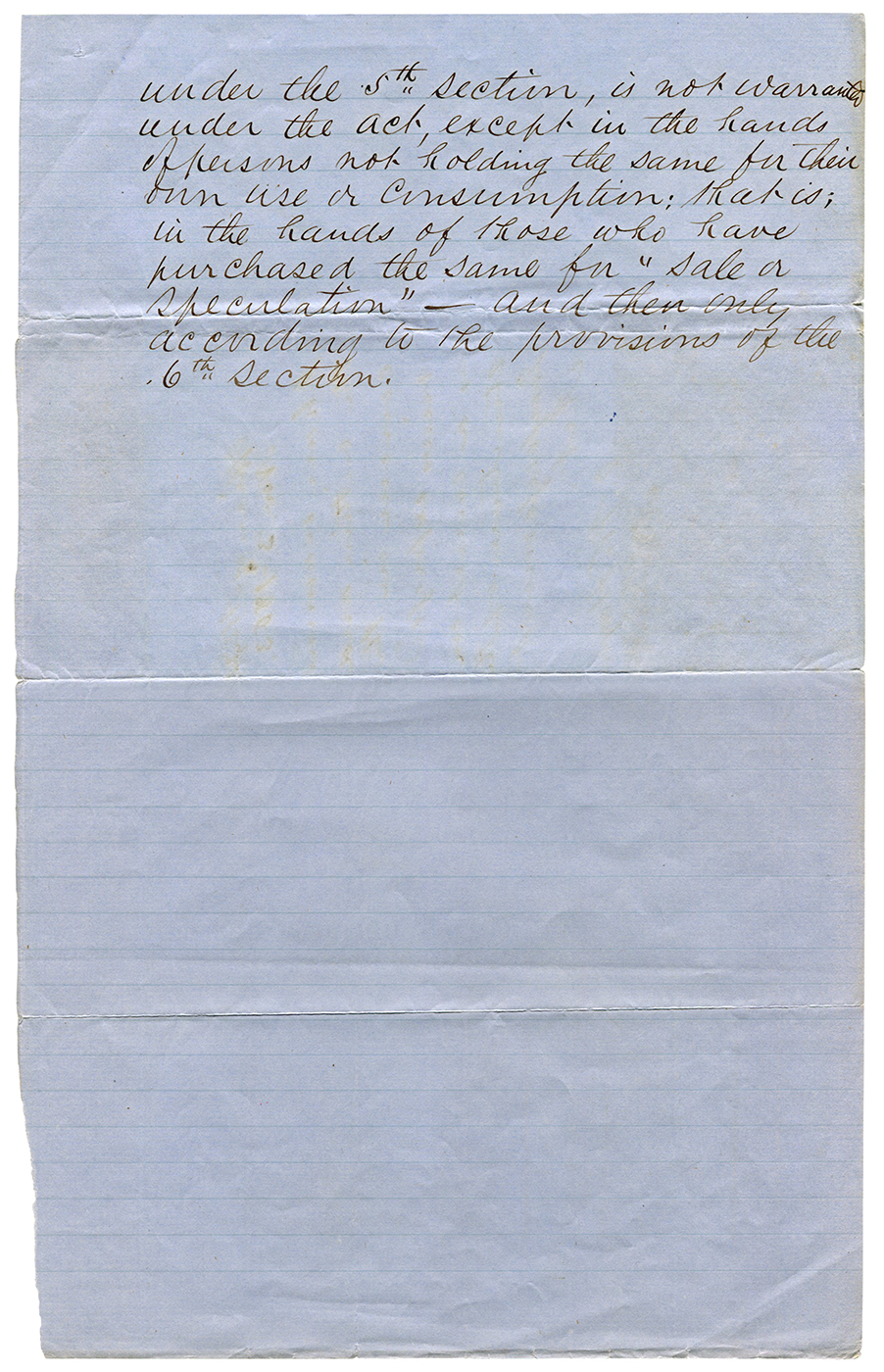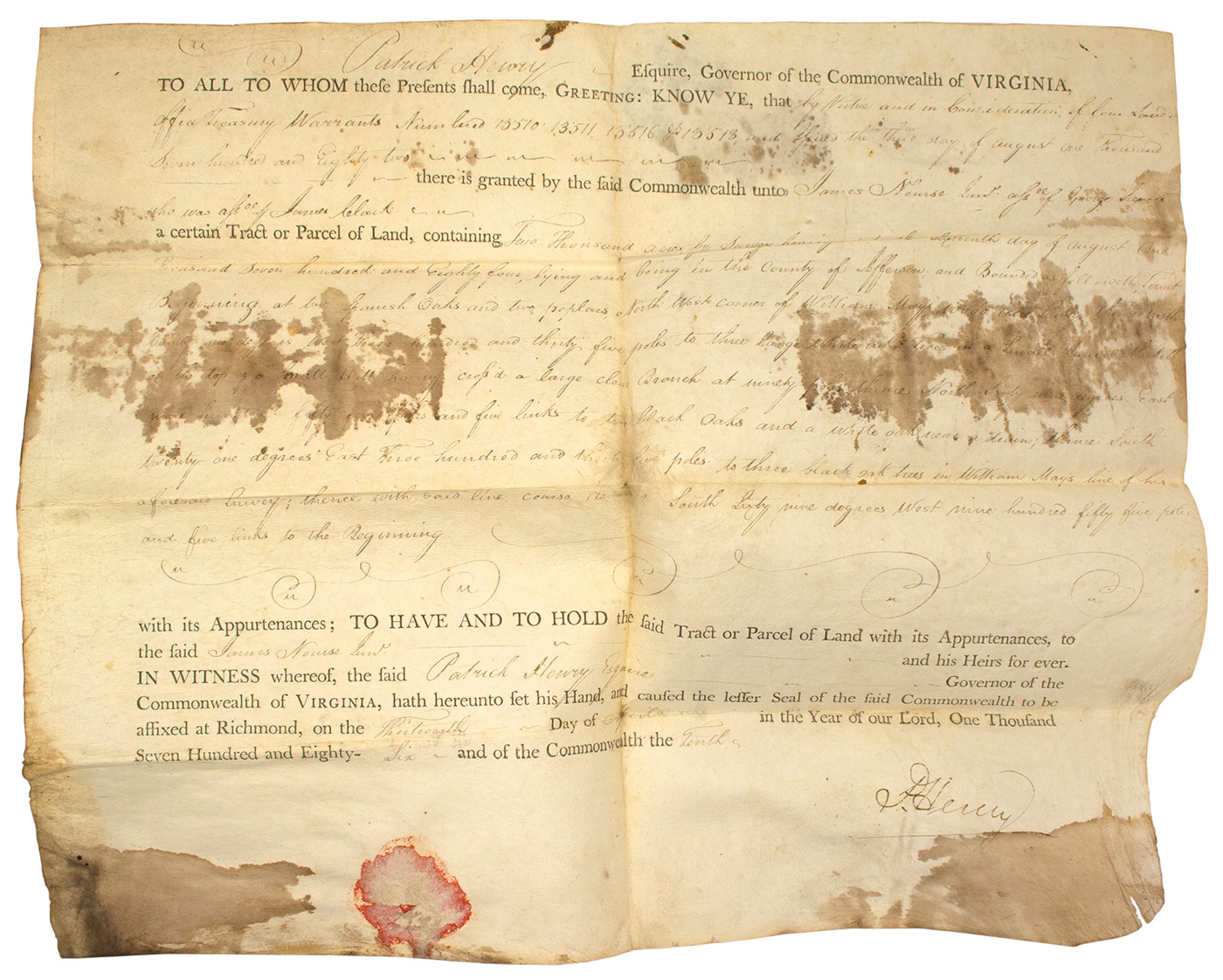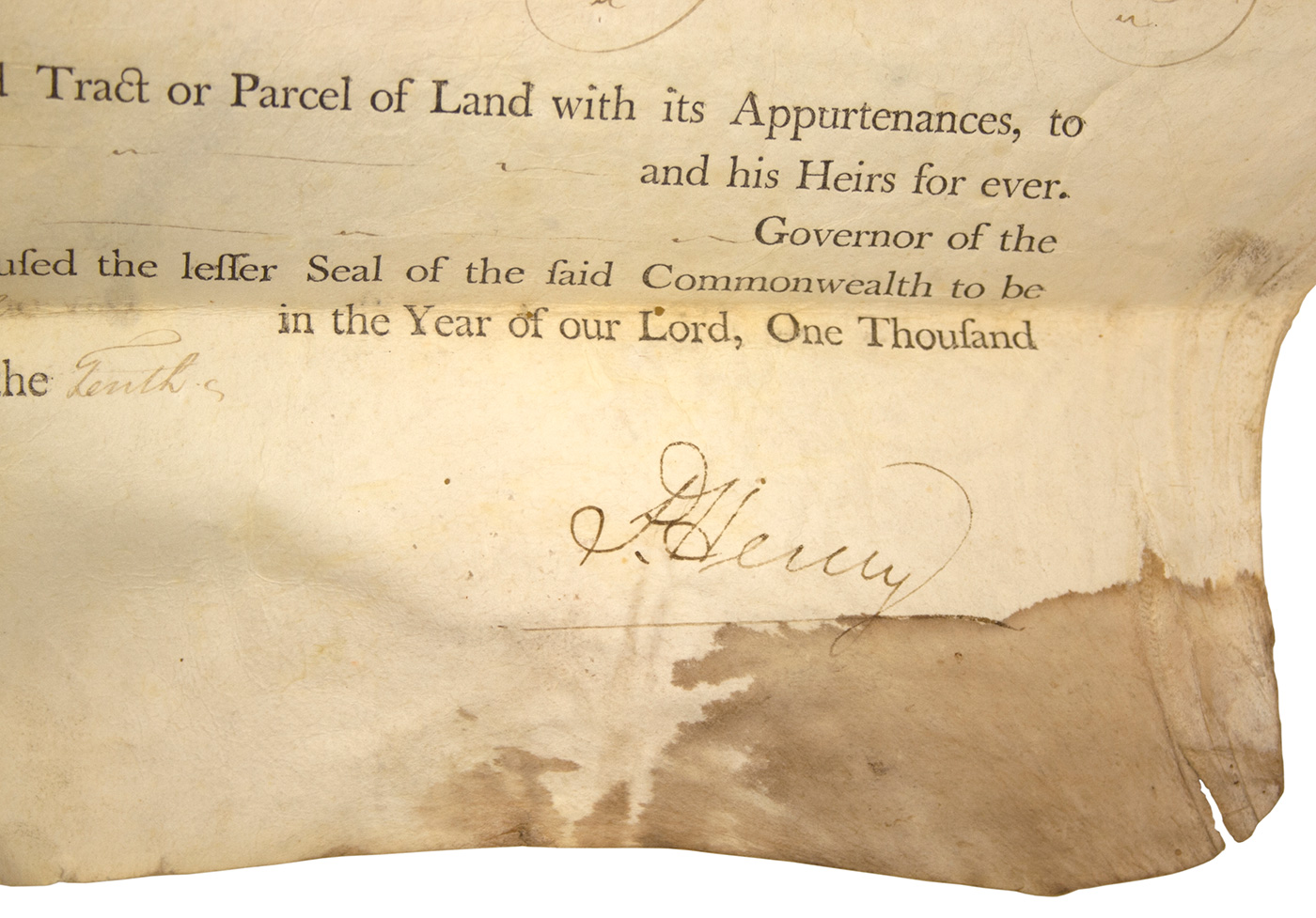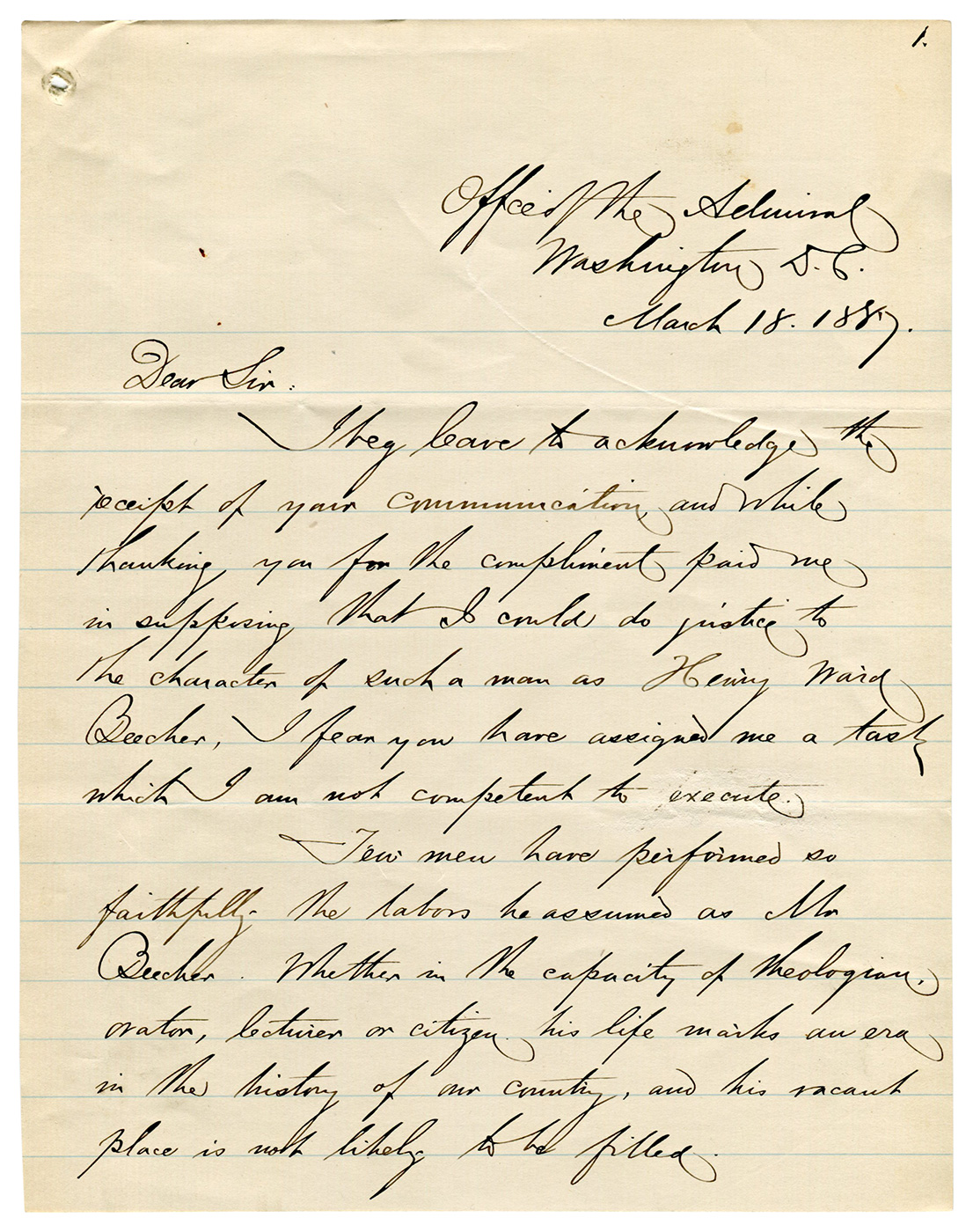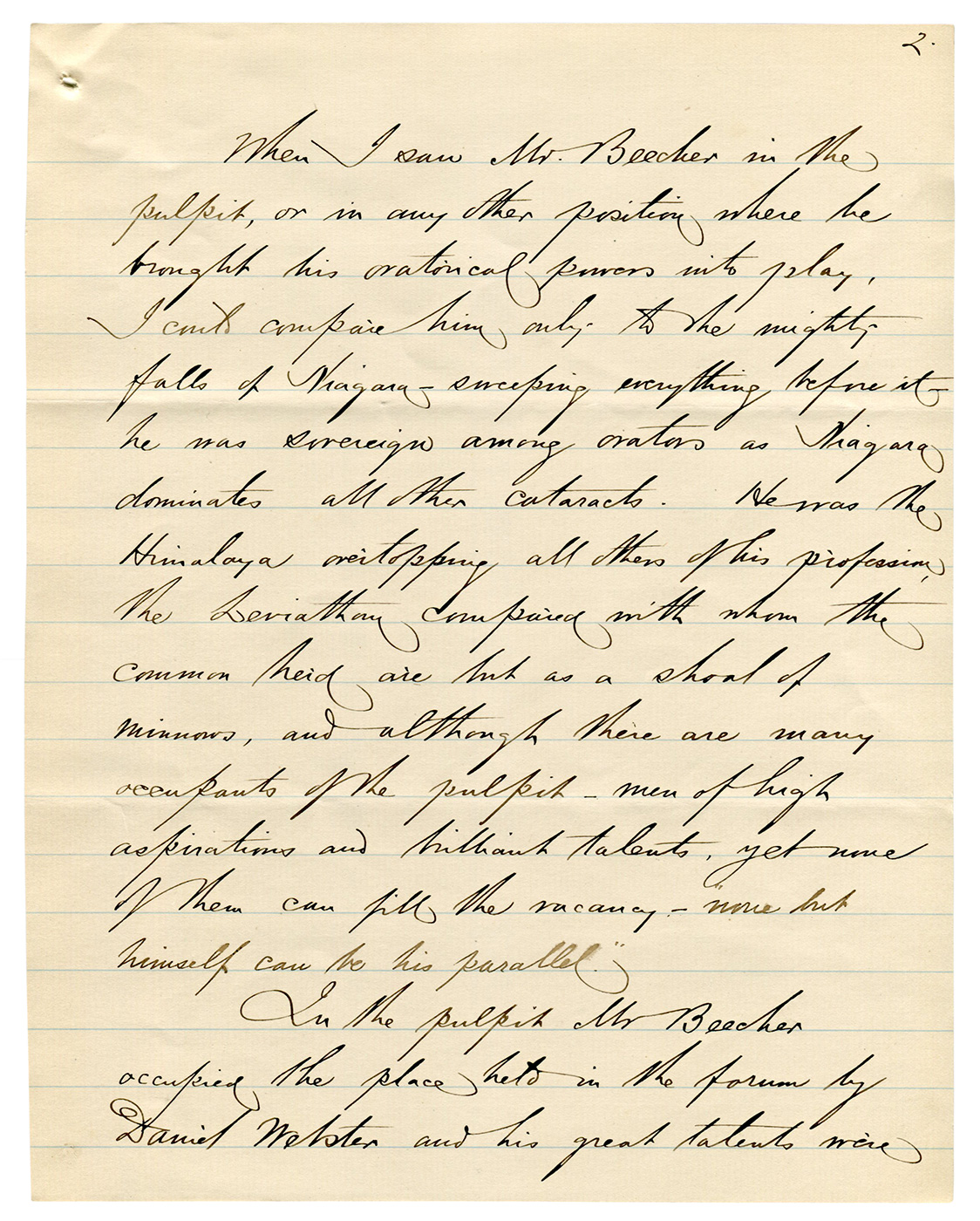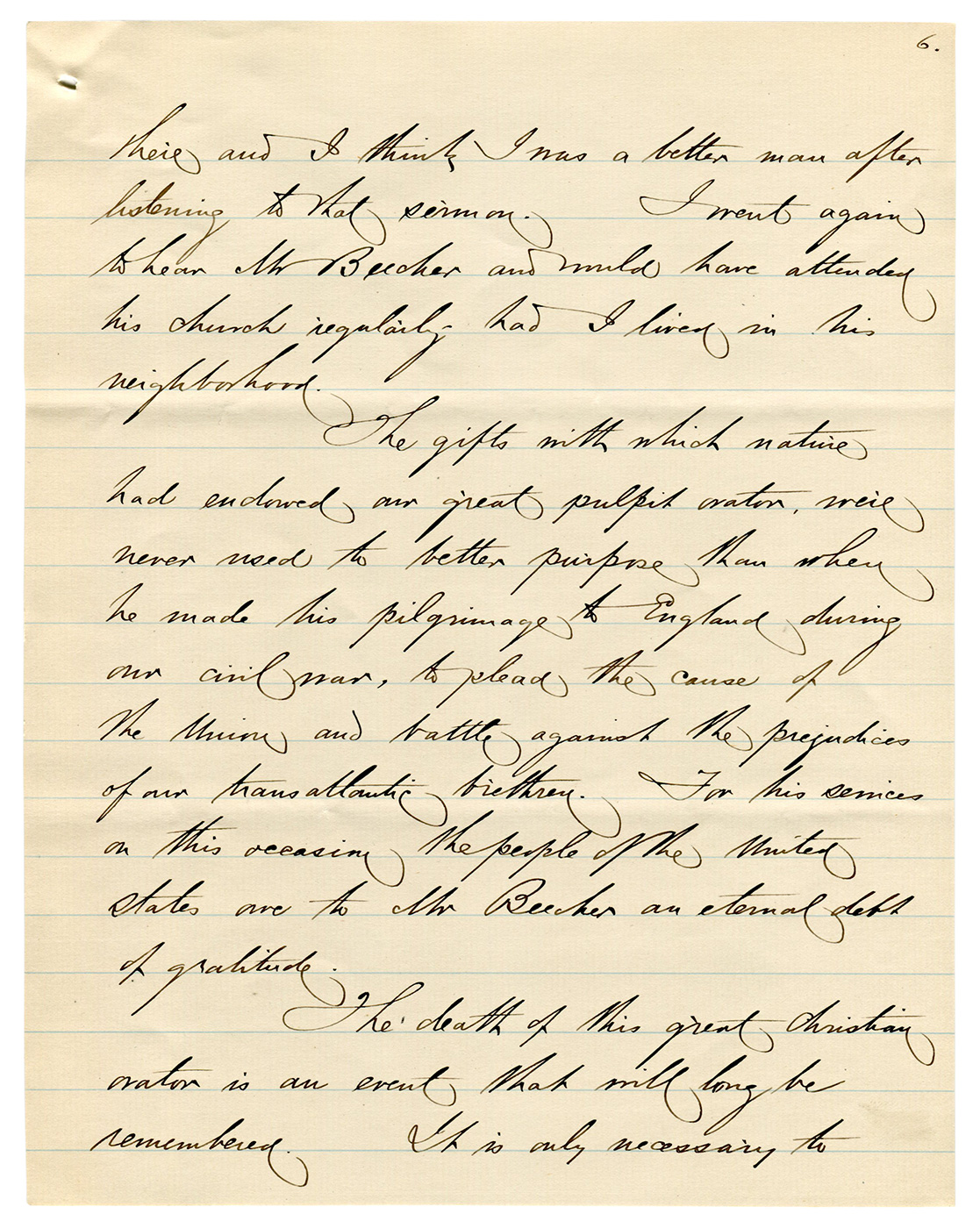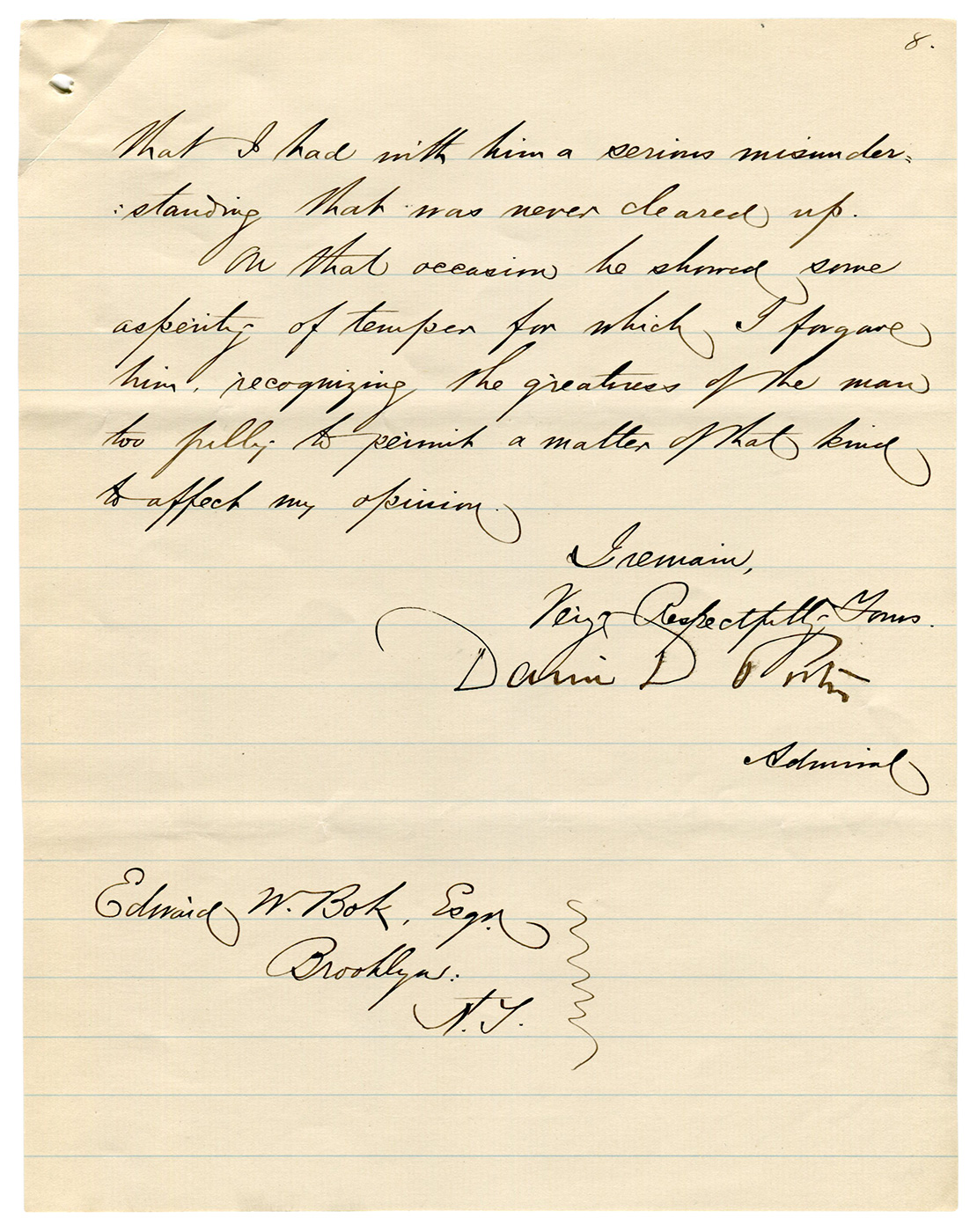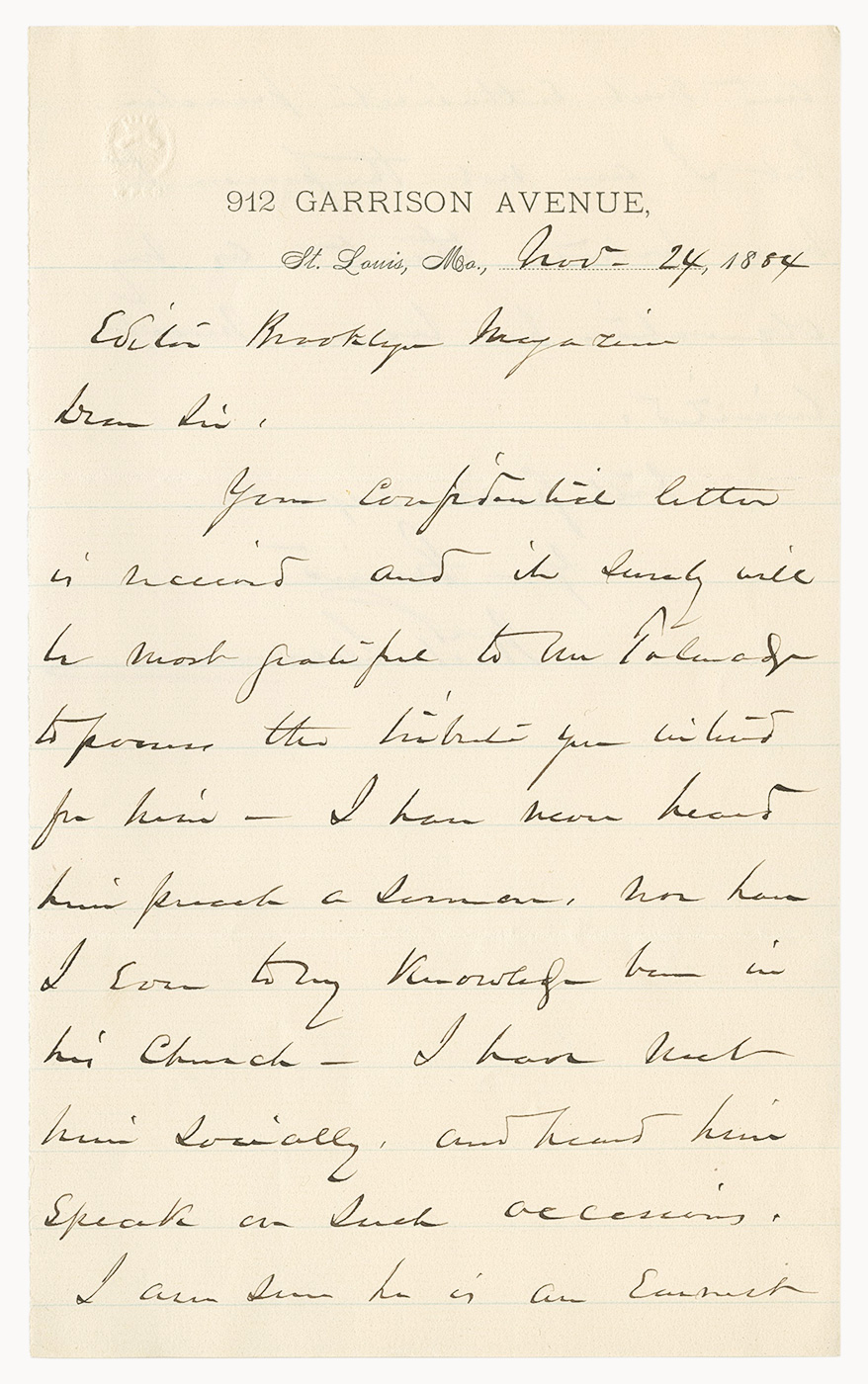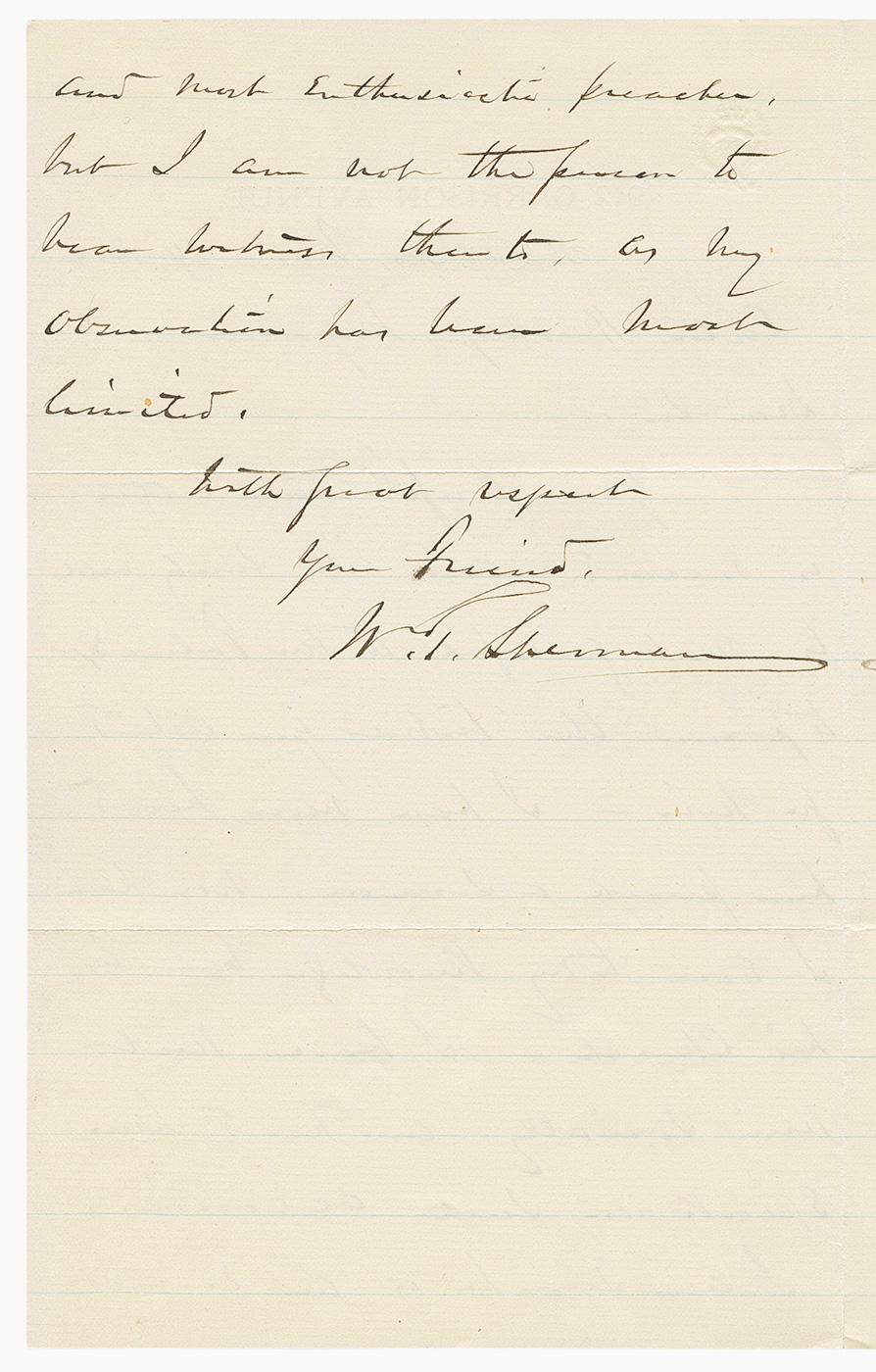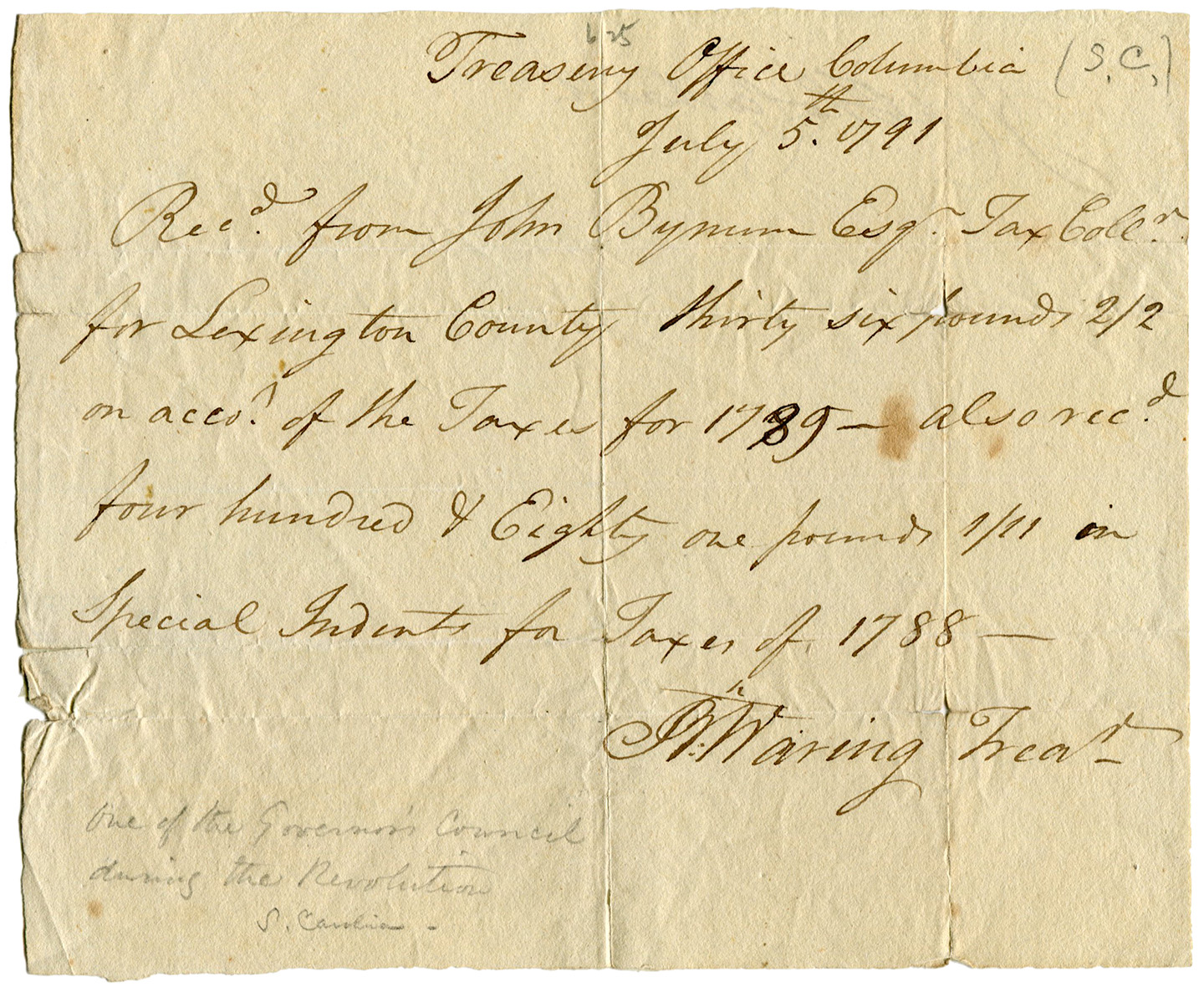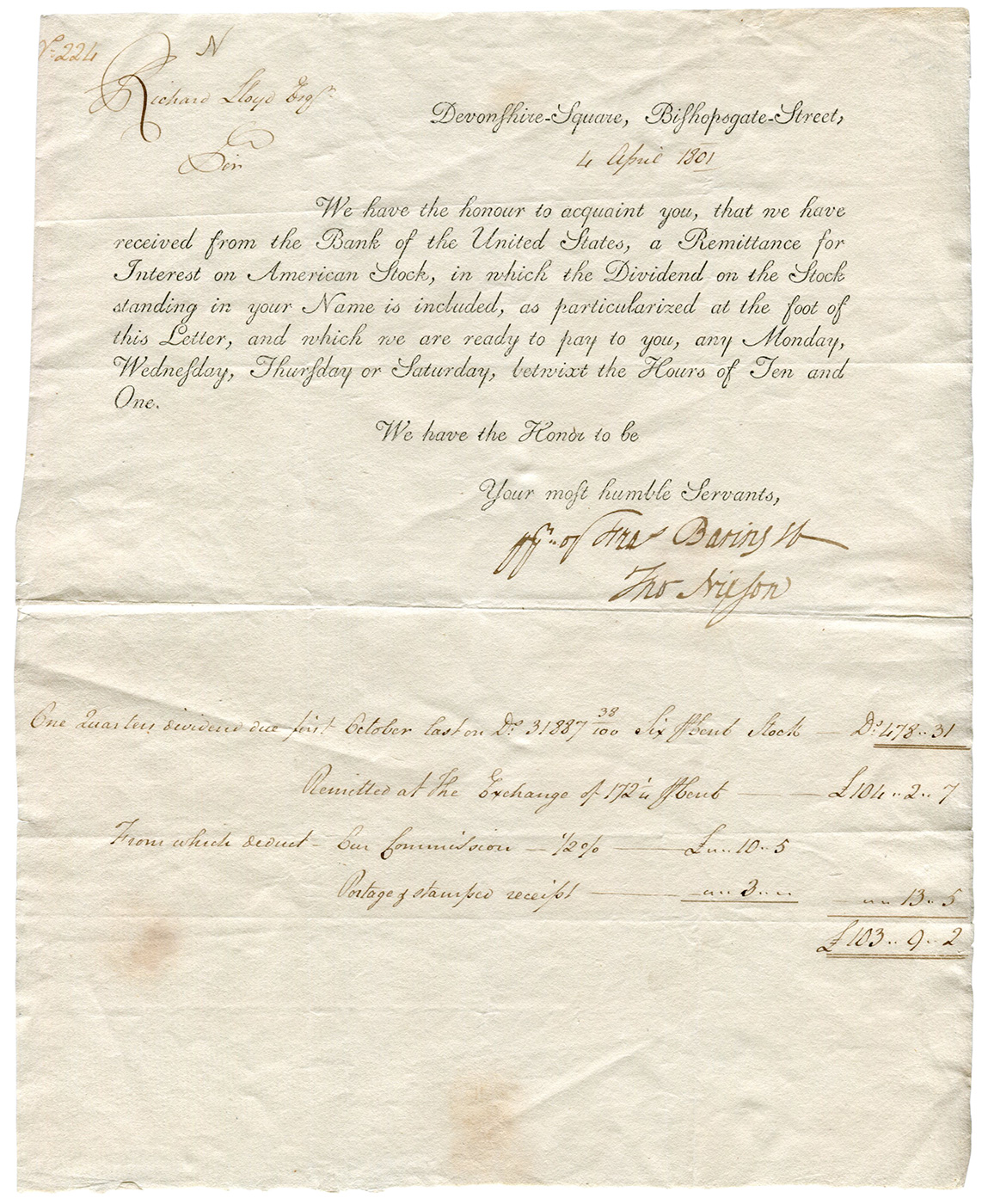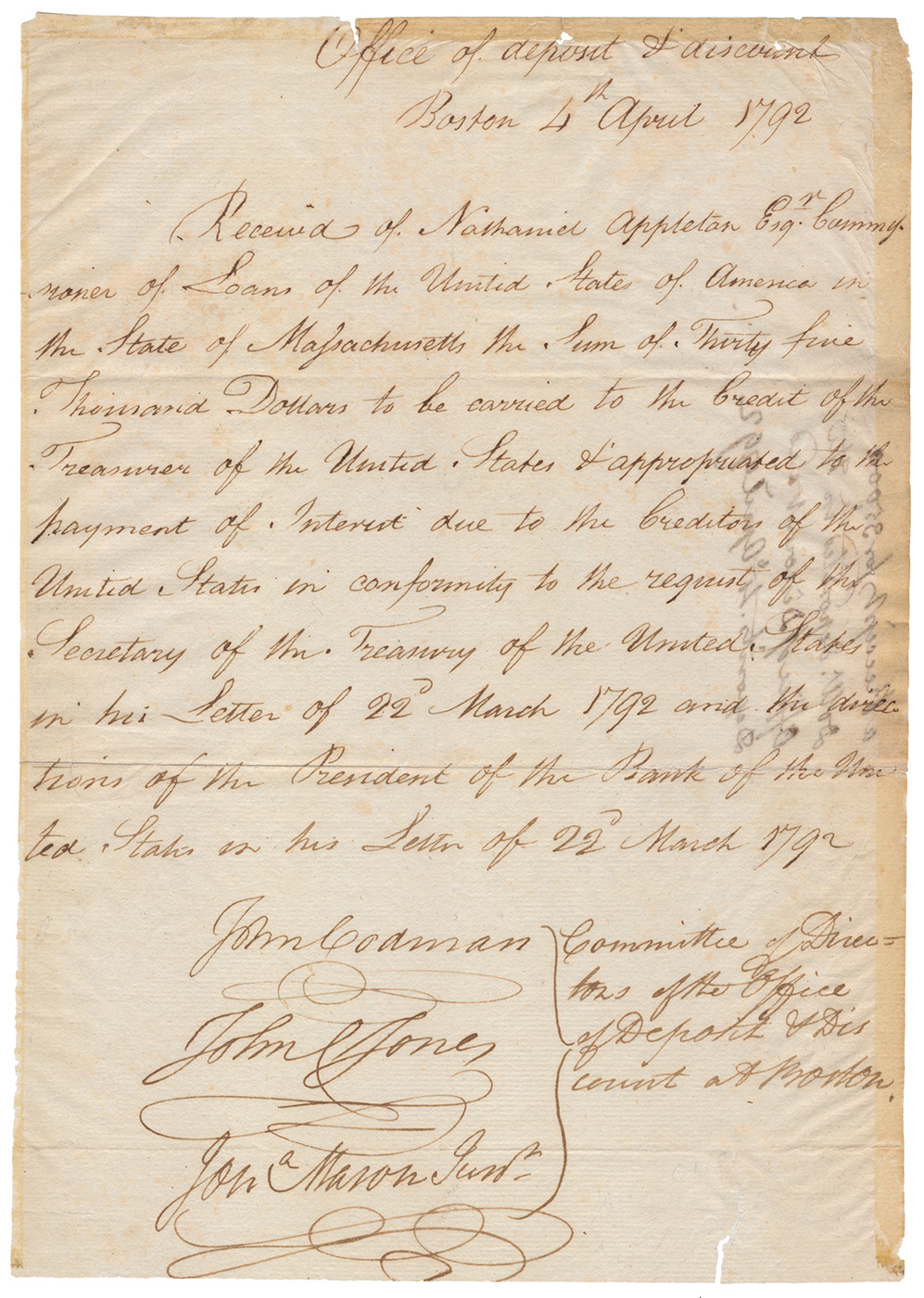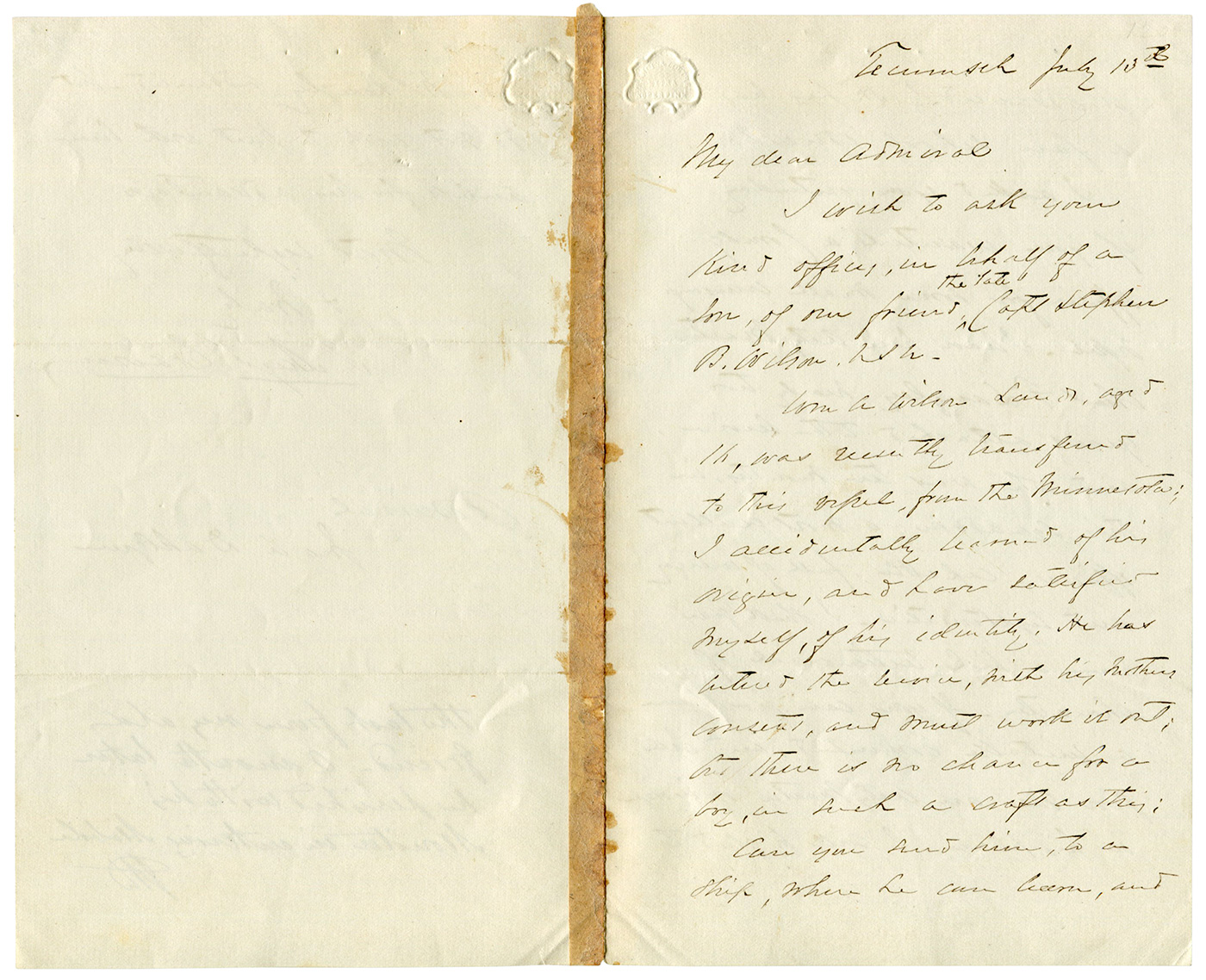
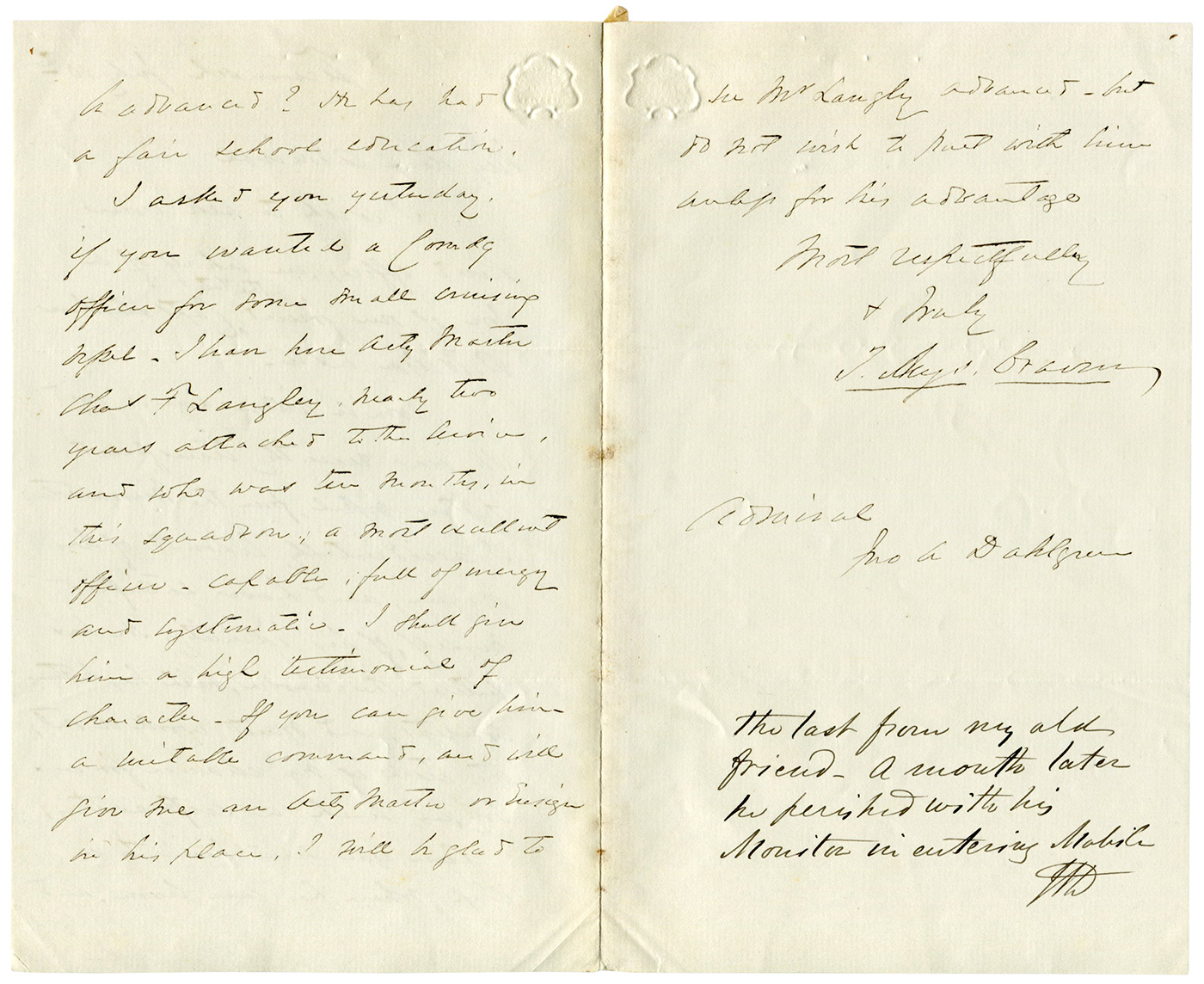
(Civil War: Battle of Mobile Bay) John A. DAHLGREN (1809-1870) Autograph Endorsement Signed “JAD” at the conclusion of Tunis Augustus Madonough CRAVEN (1813-1864) Autograph Letter Signed “T. Aug. Craven“, 3pp., 204 x 127 mm. (8 x 5 in.), aboard the USS Tecumseh, 13 July [1864].
Craven’s final letter to his friend Dahlgren, requesting a new ship for a 16 year old landsman, declaring that the ill-fated U.S.S. Tecumseh: “there is no chance for a boy, in such a craft as this.” Only 23 days prior to the lightening-quick sinking of the Tecumseh by Confederate torpedo, in which Craven and most of his crew lost their lives, Craven asks his friend Dahlgren to obtain a transfer for a young landsman, thus sparing him the most likely fate of death aboard the Tecumseh:
“I wish to ask your kind offices, in behalf of a Son of a friend, the late Capt. Stephen B. Wilson USN. Wm A. Wilson Land[sman]. aged 16, was recently transferred to this vessel, from the Minnesota; I accidentally learned of his origin, and have satisfied myself of his identity. He has entered the service, with his Father’s consent, and must work it out; but there is no chance for a boy, in such a craft as this; Can you send him to a Ship, where he can learn, and be advanced? He has had a fair school education. I asked you yesterday if you wanted a Comdg Officer for some small cruising vessel. I can hire Actg Master Chas. F. Langley, nearly two years attached to the Acacia, and who was ten months, in this Squadron; a most excellent officer— capable; full of energy and systematic. I shall give him a high testimonial of character— if you can give him a suitable command, and will give me an Act[in]g Master or Ensign in his place. I will be glad to see Mr. Langly [sic] advanced— but do not wish to part with him unless for his advantage.”
Below Craven’s closing, Dahlgren writes: “the last from my old friend— A month later he perished with his Monitor in entering Mobile“. Sadly, Dahlgren was unable to grant Craven’s request. William A. Wilson is listed among those who died aboard the Tecumseh on 5 August 1864.1
The Ironclad U.S.S. Tecumseh, which incidentally included two Dahlgren guns in its compliment, led a group of four ironclads ahead of a line of the more vulnerable wooden ships through the narrow passage into Mobile Bay on the morning of 5 August 1864. When the Tecumseh struck a submerged mine (or torpedo as they were called at the time), the ship sank in under a minute taking Craven and most of the crew with her. When the sinking threatened to block the forward passage of the entire fleet under Farragut’s command, the admiral famously decided to break the line and steer his flagship Hartford around the other ships through a known minefield (allegedly declaring “damn the torpedoes, full speed ahead!”). Farragut’s bold move proved to be one of the key tactical decisions that won the battle for the Union.
Tunis A. Craven served in the Mexican-American War and the American Civil War, dying in action when the vessel under his command, the USS Tecumseh, was torpedoed and instantly sunk in the Battle of Mobile Bay on 5 August 1864.Craven also commanded the USS Libertad, Corwin, Mohawk, Crusader, and Tuscarora.
John A. Dahlgren is best known as the “Father of American Naval Ordnance” for his central role in establishing the Navy’s Ordnance Department , and a prolific designer of various types of guns and cannons, including his namesake invention the Dahlgren Gun, which contributed significantly to the Union victory in the American Civil War.
Light soiling (mostly at inside spinal fold), glue remnants to left margin not affecting content, else fine condition.
(EXA 5668) SOLD.
________
1Navy Department Library: Deaths Due to Enemy Action, 1776-1937 (1962), 32.
